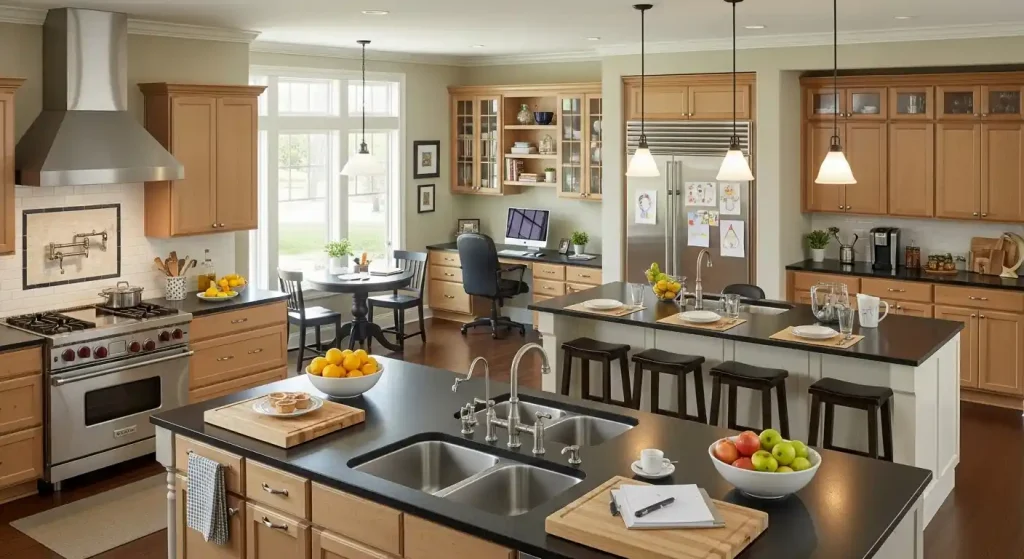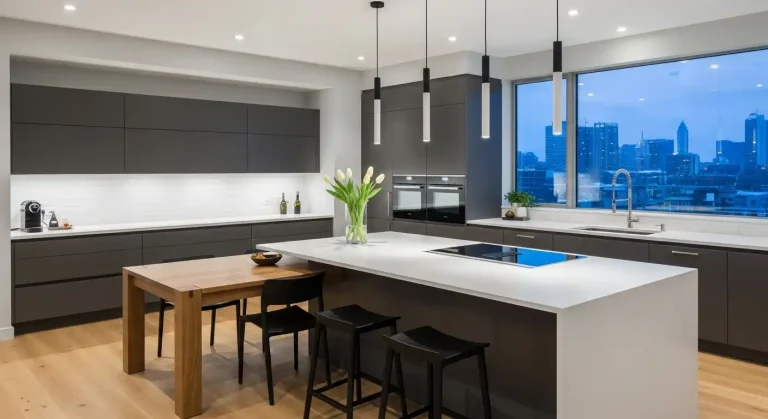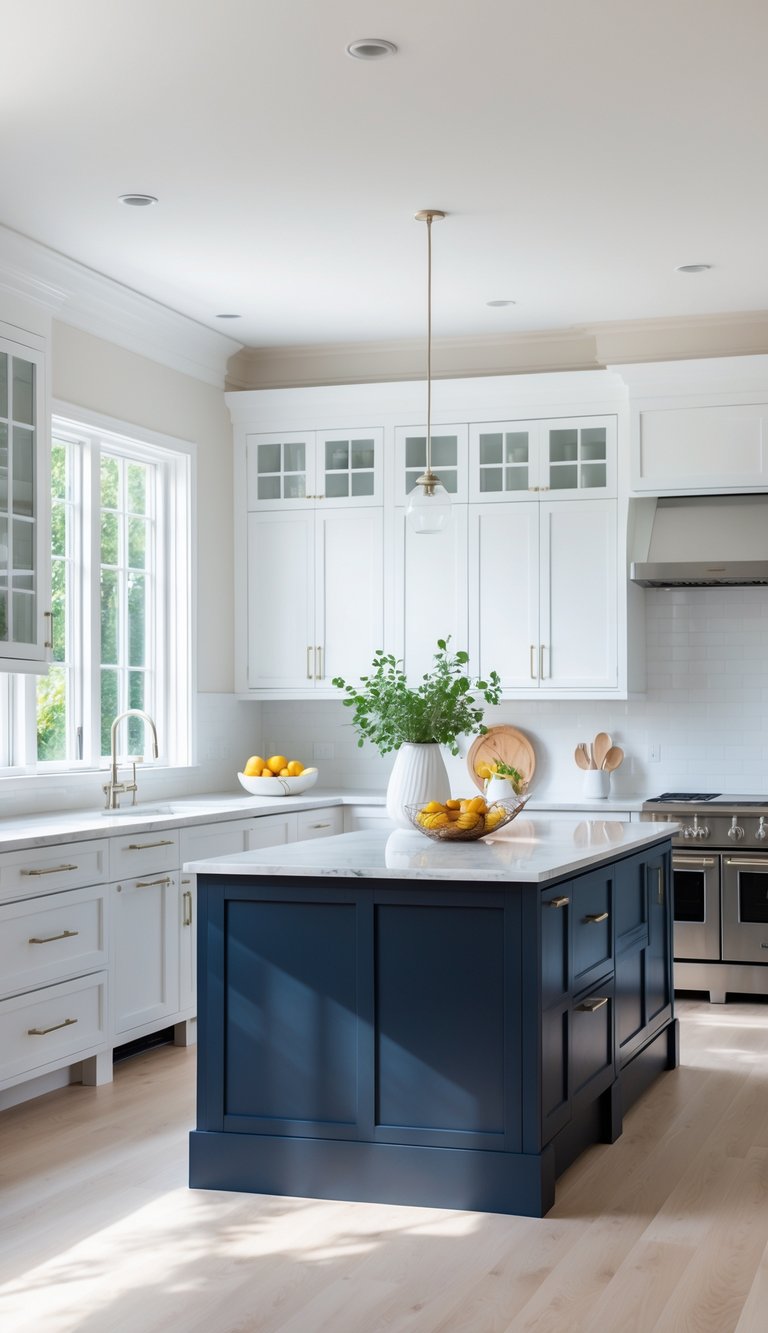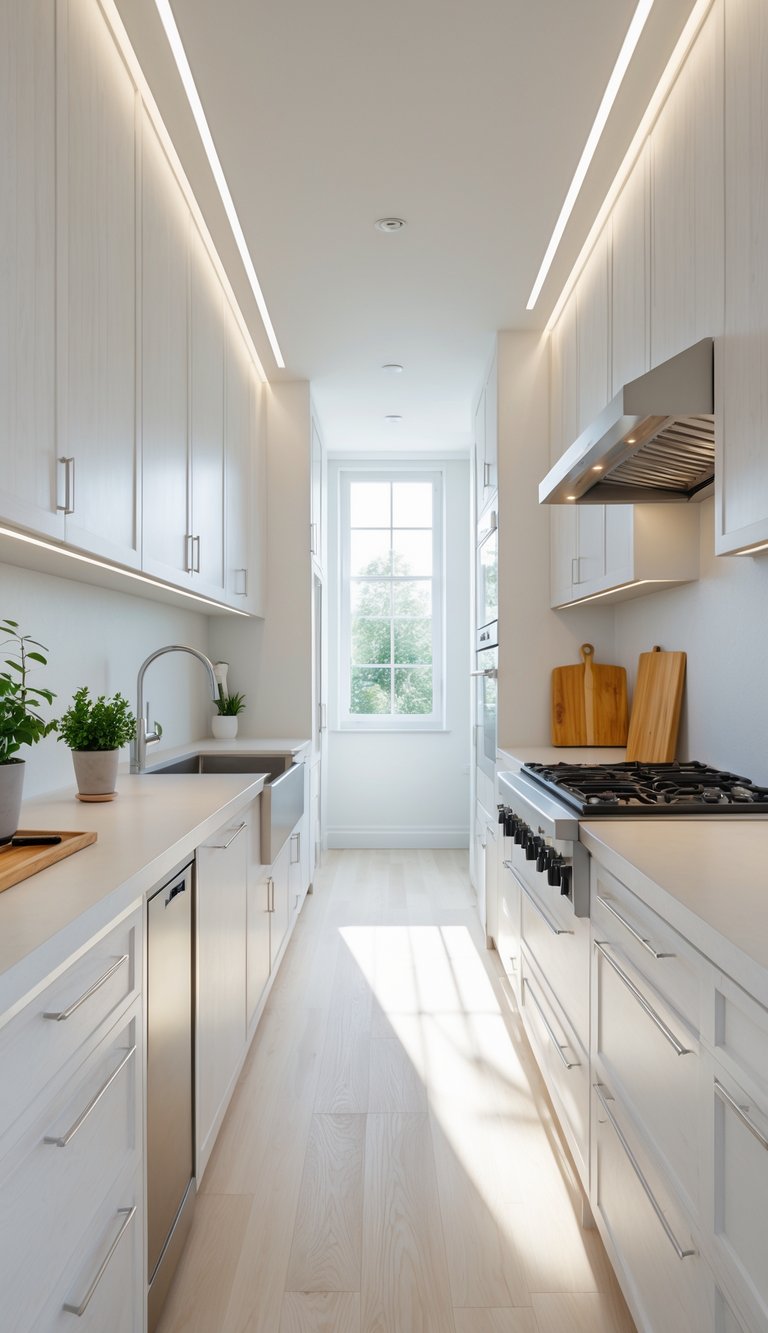How to Create a Multi-Zone Kitchen for Busy Families

In today’s fast-paced world, the kitchen has evolved far beyond being just a place to cook meals.
For many families, it’s the heart of the home — a space where cooking, homework, family conversations, and even remote work all happen side by side.
But when multiple people are using the same space for different tasks, things can quickly become chaotic.
That’s where the concept of a Multi-Zone Kitchen for Busy Families comes in.
Christmas & Year-End Deals On Amazon !
Don’t miss out on the best discounts and top-rated products available right now!
*As an Amazon Associate, I earn from qualifying purchases.
By dividing your kitchen into specific zones, you can create a more organized, efficient, and harmonious environment that supports the rhythm of everyday family life.
In this post, we’ll explore what a multi-zone kitchen is, why it’s ideal for busy families, and how you can design one that perfectly fits your lifestyle.
What Is a Multi-Zone Kitchen?
A multi-zone kitchen is a layout designed to accommodate multiple activities and users at once.
Instead of relying solely on the traditional “work triangle” (sink, stove, refrigerator), a multi-zone design divides the kitchen into dedicated areas — or zones — based on function.
For example:
- Cooking Zone: where the stove, oven, and key utensils are located
- Prep Zone: with ample counter space, cutting boards, and knives
- Cleaning Zone: centered around the sink and dishwasher
- Storage Zone: for dry goods, cookware, and small appliances
- Serving or Dining Zone: often integrated with an island or breakfast bar
- Kids’ Zone or Snack Station: a safe, accessible area for children to grab snacks or help with simple tasks
This approach improves flow and reduces congestion, making it easier for multiple family members to work side-by-side without getting in each other’s way.
Why Multi-Zone Design Works for Families
According to kitchen design experts, multi-zone layouts are especially effective in family kitchens because they balance functionality with flexibility (source).
Here’s why this approach works so well:
1. Encourages Collaboration
When the kitchen is divided into zones, everyone can participate in meal prep or cleanup simultaneously.
Parents can cook while kids set the table or prepare snacks without crowding the same counter space.
2. Reduces Clutter and Stress
Each zone has a specific purpose, which helps keep tools and ingredients organized.
For example, keeping all baking supplies in one cabinet and all breakfast items in another eliminates the “where’s the sugar?” chaos.
3. Improves Safety
Designing zones with clear traffic patterns reduces the risk of accidents — especially when hot pans, sharp knives, and small children are involved.
A designated kids’ area can give them independence while keeping them away from the stove.
Christmas & Year-End Deals On Amazon !
Don’t miss out on the best discounts and top-rated products available right now!
*As an Amazon Associate, I earn from qualifying purchases.
4. Adapts to Changing Family Needs
As your family grows, your kitchen can evolve too. A homework nook today might become a coffee bar tomorrow.
The flexibility of a multi-zone layout makes it easy to adapt over time.
Step-by-Step Guide to Creating a Multi-Zone Kitchen
Designing a multi-zone kitchen doesn’t have to mean a complete renovation. With thoughtful planning, you can transform your existing layout into a more functional family hub. Here’s how:
Step 1: Assess How Your Family Uses the Kitchen
Start by observing your daily routines. Who uses the kitchen, and when?
Do you often cook together, or does one person handle most of the prep? Do your kids do homework at the counter while you cook?
Understanding these patterns will help you identify what zones your kitchen needs most — whether that’s a dedicated coffee station, a snack zone, or extra prep space.
Step 2: Map Out Your Core Zones
Every kitchen should include at least three essential zones: cooking, prep, and cleaning.
From there, you can add extra zones based on your family’s habits.
Here’s a breakdown of common zones and what they include:
- Cooking Zone: Stove, oven, pots, pans, cooking utensils, and spices.
- Prep Zone: Counter space near the sink with knives, cutting boards, and mixing bowls.
- Cleaning Zone: Sink, dishwasher, trash can, and cleaning supplies.
- Storage Zone: Pantry, upper cabinets, and drawers for dry goods and cookware.
- Serving Zone: Island or peninsula with plates, cutlery, and serving dishes.
- Kids’ Zone: A lower cabinet with snacks, cups, and kid-friendly plates.
If space allows, consider adding specialty zones like a coffee bar, baking station, or tech charging area.
Step 3: Plan the Flow Between Zones
Once you’ve defined your zones, think about how people will move between them. The goal is to minimize overlap and keep traffic flowing smoothly.
For instance, the prep zone should be close to both the fridge and the sink for easy ingredient washing and chopping.
Christmas & Year-End Deals On Amazon !
Don’t miss out on the best discounts and top-rated products available right now!
*As an Amazon Associate, I earn from qualifying purchases.
The cooking zone should be near the prep area, while the cleaning zone should be slightly separate to prevent congestion during meal prep.
According to The Home Kitchen, professional designers often use “zone planning” to ensure seamless transitions between activities — a strategy especially useful in multi-cook families.
Step 4: Use Smart Storage Solutions
Storage is the backbone of an efficient multi-zone kitchen. Use drawers, shelves, and organizers that correspond to each zone’s function.
- Pull-out drawers near the stove for pots and pans
- Vertical dividers for baking sheets in the prep area
- Lazy Susans or pull-out baskets in corner cabinets
- Clear containers for snacks in the kids’ zone
Labeling storage areas can also help family members (especially kids) know exactly where things belong, reducing clutter and confusion.
Step 5: Incorporate a Multi-Functional Island
If your layout allows, a kitchen island can serve as the centerpiece of your multi-zone design.
According to Foreshore Kitchens, a well-designed island can act as a prep surface, dining area, and social hub all in one.
Add built-in seating for quick breakfasts, power outlets for charging devices, and storage underneath for maximum functionality.
The island can also act as a visual divider between cooking and living spaces in open-plan homes.
Step 6: Design for Family Interaction
A multi-zone kitchen isn’t just about efficiency — it’s about connection. Consider how your design encourages togetherness.
- Add a chalkboard wall for family reminders or weekly menus.
- Create a cozy seating nook for casual conversations.
- Include open shelving or display cabinets for family cookbooks or heirloom dishes.
These personal touches make the kitchen feel warm, inviting, and uniquely yours.
Bonus Tips for Busy Families
- Use durable, easy-to-clean materials. Quartz countertops, tile backsplashes, and laminate flooring can handle spills and high traffic.
- Incorporate good lighting. Use task lighting in prep areas and softer ambient lighting for dining zones.
- Add smart appliances. Wi-Fi-enabled ovens, touchless faucets, and voice-controlled lighting can save time and simplify daily routines.
- Plan for flexibility. Modular furniture and movable carts can adapt to changing needs — from kids’ crafts to adult dinner parties.
The Heart of a Multi-Zone Kitchen for Busy Families
Ultimately, creating a Multi-Zone Kitchen for Busy Families is about designing a space that reflects how your family truly lives. It’s not just about aesthetics or following design trends — it’s about function, flow, and family connection.
By dividing your kitchen into purposeful zones, you create an environment that supports teamwork, minimizes chaos, and allows everyone to contribute.
Christmas & Year-End Deals On Amazon !
Don’t miss out on the best discounts and top-rated products available right now!
*As an Amazon Associate, I earn from qualifying purchases.
Whether it’s cooking dinner together, packing school lunches, or sharing stories over coffee, a well-designed multi-zone kitchen helps transform everyday moments into meaningful family memories.
Final Thoughts
A multi-zone kitchen is more than a design strategy — it’s a lifestyle solution for modern families. With thoughtful planning, smart storage, and a focus on flexibility, you can create a kitchen that works as hard as you do.
So, the next time your kitchen feels crowded or chaotic, take a step back and ask: Could zoning make this space flow better? Chances are, the answer is yes — and your family will thank you for it.






